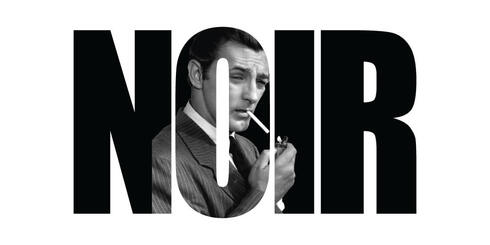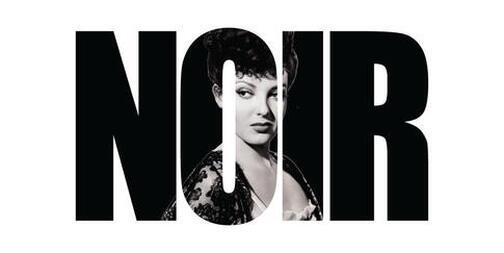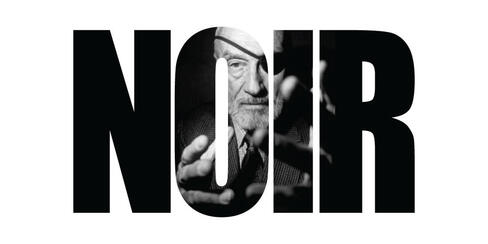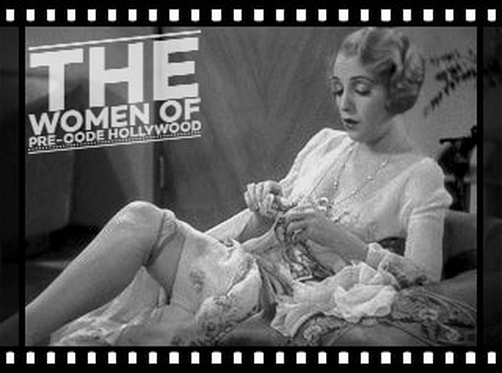MARIE WINDSOR
AND FILM NOIR
Marie Windsor made significant contributions to the film noir genre during her career. With her striking looks and ability to embody complex and often dangerous female characters, she became one of the notable femme fatales of the era. Here are some of her notable contributions to film noir:
"Force of Evil" (1948): In this film, Windsor played Edna Tucker, the seductive mistress of a corrupt lawyer involved in the world of organized crime. Her performance as a manipulative and alluring woman added depth and tension to the story.
"The Killing" (1956): Directed by Stanley Kubrick, this crime film featured Windsor as Sherry Peatty, the unfaithful wife of a racetrack cashier involved in a heist. Her portrayal of a conniving femme fatale earned critical acclaim and solidified her reputation as a standout performer in the genre.
"The Narrow Margin" (1952): In this classic film noir, Windsor portrayed Mrs. Neall, a ruthless and cunning woman who becomes embroiled in a murder plot on a train. Her character's dark motivations and sharp dialogue contributed to the suspense and intrigue of the film.
"The Sniper" (1952): Marie Windsor played Jean Darr, a nightclub singer in this crime thriller about a disturbed man with a sniper rifle targeting women. Her character added a layer of danger and allure to the narrative, making her an integral part of the film's noir atmosphere.
These films, among others, showcased Marie Windsor's ability to portray complex, enigmatic, and often morally ambiguous characters that were characteristic of the film noir genre. Her performances helped define the archetype of the femme fatale and contributed to the allure and lasting impact of film noir.
"Force of Evil" (1948): In this film, Windsor played Edna Tucker, the seductive mistress of a corrupt lawyer involved in the world of organized crime. Her performance as a manipulative and alluring woman added depth and tension to the story.
"The Killing" (1956): Directed by Stanley Kubrick, this crime film featured Windsor as Sherry Peatty, the unfaithful wife of a racetrack cashier involved in a heist. Her portrayal of a conniving femme fatale earned critical acclaim and solidified her reputation as a standout performer in the genre.
"The Narrow Margin" (1952): In this classic film noir, Windsor portrayed Mrs. Neall, a ruthless and cunning woman who becomes embroiled in a murder plot on a train. Her character's dark motivations and sharp dialogue contributed to the suspense and intrigue of the film.
"The Sniper" (1952): Marie Windsor played Jean Darr, a nightclub singer in this crime thriller about a disturbed man with a sniper rifle targeting women. Her character added a layer of danger and allure to the narrative, making her an integral part of the film's noir atmosphere.
These films, among others, showcased Marie Windsor's ability to portray complex, enigmatic, and often morally ambiguous characters that were characteristic of the film noir genre. Her performances helped define the archetype of the femme fatale and contributed to the allure and lasting impact of film noir.
AVAILABLE FILMS:
ABBOTT AND COSTELLO MEET THE MUMMY (1955)
BIG STREET, THE (1942)
BOUNTY HUNTER, THE (1954)
CITY THAT NEVER SLEEPS, THE (1953)
DAY OF THE BAD MAN (1958)
EYES IN THE NIGHT (1942)
FORCE OF EVIL (1948)
JOAN OF PARIS (1942)
KILLING, THE (1956)
NARROW MARGIN, THE (1952)
NO MAN'S WOMAN (1955)
OUTPOST IN MOROCCO (1949)
SNIPER, THE (1952)
SONG OF THE THIN MAN (1947)
SWAMP WOMEN (1955)
TWO DOLLAR BETTOR (1951)
UNHOLY WIFE, THE (1957)
BIG STREET, THE (1942)
BOUNTY HUNTER, THE (1954)
CITY THAT NEVER SLEEPS, THE (1953)
DAY OF THE BAD MAN (1958)
EYES IN THE NIGHT (1942)
FORCE OF EVIL (1948)
JOAN OF PARIS (1942)
KILLING, THE (1956)
NARROW MARGIN, THE (1952)
NO MAN'S WOMAN (1955)
OUTPOST IN MOROCCO (1949)
SNIPER, THE (1952)
SONG OF THE THIN MAN (1947)
SWAMP WOMEN (1955)
TWO DOLLAR BETTOR (1951)
UNHOLY WIFE, THE (1957)
VIDEO TRIBUTE:
Marie Windsor
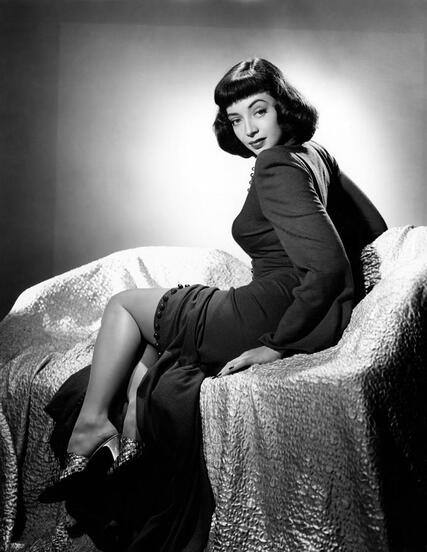
Marie Windsor, born as Emily Marie Bertelsen, was an American actress known for her work in film and television during the mid-20th century. She was born on December 11, 1919, in Marysvale, Utah, and passed away on December 10, 2000, in Beverly Hills, California.
Windsor began her career in the late 1940s and quickly established herself as a versatile actress, often portraying strong and seductive women. She gained recognition for her performances in film noir and western genres. With her distinctive looks and sultry voice, she became a memorable presence on screen.
One of Windsor's most notable roles came in 1956 when she portrayed femme fatale Sherry Peatty in the film "The Killing," directed by Stanley Kubrick. She delivered a memorable performance as a cunning and manipulative woman involved in a heist. This role showcased her ability to play complex characters and garnered critical acclaim.
Throughout her career, Marie Windsor appeared in numerous films, including "Force of Evil" (1948), "City That Never Sleeps" (1953), "Hellfire" (1949), "Narrow Margin" (1952), and "The Sniper" (1952), among others. She also appeared in several television shows, such as "Perry Mason," "The Beverly Hillbillies," and "The Fugitive."
Despite her talent and success, Windsor never achieved A-list stardom but remained a respected and recognizable actress. She continued to work in film and television until the early 1980s, after which she retired from acting.
Marie Windsor's contributions to the film industry and her memorable performances have left a lasting legacy. She is remembered as a talented and alluring actress who left her mark on the classic era of Hollywood cinema.
Windsor began her career in the late 1940s and quickly established herself as a versatile actress, often portraying strong and seductive women. She gained recognition for her performances in film noir and western genres. With her distinctive looks and sultry voice, she became a memorable presence on screen.
One of Windsor's most notable roles came in 1956 when she portrayed femme fatale Sherry Peatty in the film "The Killing," directed by Stanley Kubrick. She delivered a memorable performance as a cunning and manipulative woman involved in a heist. This role showcased her ability to play complex characters and garnered critical acclaim.
Throughout her career, Marie Windsor appeared in numerous films, including "Force of Evil" (1948), "City That Never Sleeps" (1953), "Hellfire" (1949), "Narrow Margin" (1952), and "The Sniper" (1952), among others. She also appeared in several television shows, such as "Perry Mason," "The Beverly Hillbillies," and "The Fugitive."
Despite her talent and success, Windsor never achieved A-list stardom but remained a respected and recognizable actress. She continued to work in film and television until the early 1980s, after which she retired from acting.
Marie Windsor's contributions to the film industry and her memorable performances have left a lasting legacy. She is remembered as a talented and alluring actress who left her mark on the classic era of Hollywood cinema.
quotes:
"I'm 5'9" and there were two stars in my life who didn't mind that I was taller than they--George Raft and John Garfield. Raft told me how to walk with him in a scene: We'd start off in a long shot normal, and about the time we got together in a close-up, I'd be bending my knees so I'd be shorter. I had to do a tango with Raft and I learned to dance in ballet shoes with my knees bent."
- Marie Windsor
trivia:
At the funeral for her husband, Humphrey Bogart, she put a whistle in his coffin. It was a reference to the famous line she says to him in their first film together To Have and Have Not (1944): "You know how to whistle, don't you? You just put your lips together and blow".
When Howard Hawks discovered her, he gave her the choice to work with either Cary Grant or Humphrey Bogart. Bacall was very tempted to work with Grant, but Hawks ended up casting her with Bogart in To Have and Have Not (1944), and one of Hollywood's greatest romances was started.
She was dismissed by Howard Hawks because she had a high nasal voice, but she spent two weeks developing her voice and, when she came back to visit Hawks two weeks later, she had a deep husky voice.
According to her autobiography, "By Myself and Then Some", Bacall lost her virginity to future husband Humphrey Bogart at age 19 when they began an affair in February 1944.
Her screen persona was totally based and modeled after Howard Hawks's wife, Slim. She even uses her name in To Have and Have Not (1944).
Shortly after Humphrey Bogart's death, she announced her engagement to Frank Sinatra to the press. Sinatra promptly backed out.
When Howard Hawks discovered her, he gave her the choice to work with either Cary Grant or Humphrey Bogart. Bacall was very tempted to work with Grant, but Hawks ended up casting her with Bogart in To Have and Have Not (1944), and one of Hollywood's greatest romances was started.
She was dismissed by Howard Hawks because she had a high nasal voice, but she spent two weeks developing her voice and, when she came back to visit Hawks two weeks later, she had a deep husky voice.
According to her autobiography, "By Myself and Then Some", Bacall lost her virginity to future husband Humphrey Bogart at age 19 when they began an affair in February 1944.
Her screen persona was totally based and modeled after Howard Hawks's wife, Slim. She even uses her name in To Have and Have Not (1944).
Shortly after Humphrey Bogart's death, she announced her engagement to Frank Sinatra to the press. Sinatra promptly backed out.

